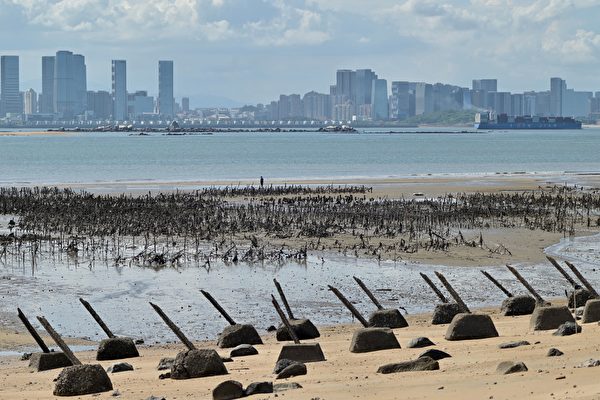The Taiwanese government is reportedly working diligently to strengthen public services and civil defense infrastructure in response to the increasing threat from China.
Several informed government officials told the Financial Times that the reform agenda includes increasing civil defense manpower, establishing reserves of food and energy, enhancing emergency medical capabilities, and strengthening communication infrastructure.
Sources indicate that the plan will be submitted for President Lai Ching-te’s approval on Thursday, July 11. Since taking office in May this year, the Lai Ching-te administration has made enhancing civil defense capabilities a key focus of their work.
A Taiwanese official stated: “In short, if Taiwan were to face a war, our military would have to get involved, but we hope that society can continue to function as normally as possible.”
Beijing claims Taiwan as part of its territory and has threatened to use force to control the island. In recent years, China has been increasing military pressure on Taiwan by frequently sending large numbers of military aircraft and vessels to conduct exercises around the island, raising concerns about the possibility of a blockade by the People’s Liberation Army.
In 2023, China sent military aircraft to Taiwan’s Air Defense Identification Zone (ADIZ) a total of 1,709 times, slightly less than the 1,738 times in 2022 due to a calm December, but still an increase of nearly 76% from the 972 times in 2021, indicating an escalation in military activities by China near Taiwan.
In May of this year, President Lai Ching-te emphasized in his inaugural speech that “Taiwan and China are not subordinate to each other.” Subsequently, China claimed to have conducted “punitive” military exercises and introduced 22 punitive measures against Taiwan independence. In response, Taiwan immediately raised its travel alert level.
Recently, China’s aircraft carrier, the Shandong, conducted joint naval and aerial exercises in the western Pacific Ocean, with a large number of military aircraft accompanying it.
On Thursday, Taiwan’s Ministry of National Defense reported that within the last 24 hours up to 6:00 in the morning, 66 incidents involving Chinese military aircraft were detected, with 56 instances crossing the median line of the Strait, setting a new record for the year. The closest approach of the aircraft was only 33 nautical miles off Cape Eluanbi.
At the same time, Taiwan’s military also monitored the activities of seven Chinese military vessels near the Taiwan Strait. The Taiwanese military stated that reconnaissance planes, ships, and shore-based missile systems have been deployed to closely monitor and respond.
Following Russia’s invasion of Ukraine in 2022, the Taiwanese government began to take action to strengthen defense reform, including the reinstatement of a one-year compulsory military service for men, the establishment of a drone unit, and an assessment of the country’s disaster response capabilities.
Sources mentioned that the plan to enhance civil defense capabilities by the Lai Ching-te administration is based on the previous administration led by Tsai Ing-wen. Proposed initiatives include expanding rice milling capacity, increasing staple food reserves, and drilling more wells to ensure a water supply.
Officials are also exploring methods for distributing food supplies, with one proposal suggesting the use of convenience stores located throughout Taiwan. According to data provided by the Ministry of Economic Affairs, as of the end of December 2023, there were a total of 13,706 convenience stores in Taiwan, averaging one store for every 1,703 people.
Authorities expressed the desire to enhance the capacity to treat a large number of casualties in hospitals, establish backup infrastructure, and prevent China from cutting undersea cables.
Two government officials mentioned that disputes between the central and local governments in Taiwan over mask and vaccine distribution during the pandemic have provided valuable lessons for wartime scenarios.
A Taiwanese official stated that there are ongoing efforts to revise disaster management mechanisms in order to establish a clearer chain of command, and to create a system that can effectively function both in peacetime and during wartime.

